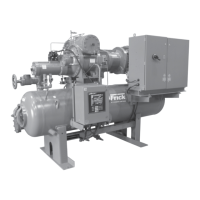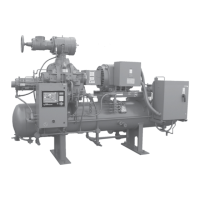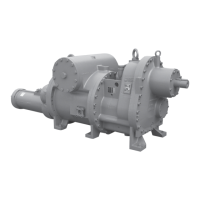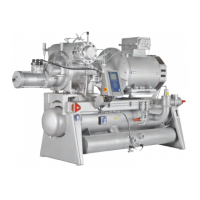MAINTENANCE
The unit should be inspected, cleaned, and lubricated on
a periodic basis. The required services and recommended
frequency for each are summarized in the Operation and
Maintenance Schedule in this manual.
A daily AcuAir
®
system operations log is a good method to
assure that no problems develop that may go unchecked.
Entries to this log should be made once each shift. Any
notations should be entered as they occur (or internal policy
dictates). It is essential that the maintenance manager examine
notations (from the previous 24 hours) on a daily basis.
As weather and safety dictate, a visual check of the AcuAir
®
unit should be made once each shift (daily at a minimum) to
examine operating conditions. Unusual leaks, noise, vibration,
part damage/failures, or vandalism should be logged and
investigated immediately. Corrective action should be initiated
immediately.
Components of the AcuAir unit should also be part of the
daily operational checks for the AcuAir
®
system unit. In
particular, ltration performance is important to satisfactory
and problem-free AcuAir
®
system unit operation.
An AcuAir
®
air unit's operational readiness is dependent on
the condition of the coil. Coils that are dirty, blocked from
airow, or physically damaged may affect overall heat transfer
capability of the AcuAir
®
system to a signicant degree.
Periodically conduct a visual inspection of the coil section
and refrigerant line connections. Remove any airborne debris
that may have collected on the face of the coils themselves.
Refrigerant could share the air stream with food products and
personnel. As such, proper maintenance of coils, to prevent
corrosion and leaks, is essential to prevent product loss and
to ensure the safety of plant personnel.
A typical refrigerated food processing facility sparkles with
stainless steel food contact surfaces and clean work spaces.
However, evaporators that are suspended overhead, trapping
airborne contaminants and corrosive elements in the coils,
are usually not so sparkly.
For all coils, chlorine-based cleansing solutions, acidic
cleansing solutions and highly alkaline cleansing solutions are
hazardous to the coil's integrity. Use a mildly alkaline cleanser.
Consult with your chemical supplier and read the Material
Safety Data Sheet for your cleansing solution.
The water used to wash the coils should be analyzed prior to
use to determine its suitability. It should not contain dissolved
chemicals or organisms. Contact a specialist to test the water,
then follow his recommendations. Establish and follow a
regular testing and treatment schedule.
Further need for cleaning or repair of an AcuAir
®
system coil
should be left to the judgement of a certied or factory-trained
service person. Contact the local AcuAir
®
representative if
a coil or its connections appears to have been signicantly
damaged.
Do not allow ice buildup. If a coil remains partially frosted
after a defrost, it is unlikely to ever completely clean itself in
a subsequent defrost. If a coil is allowed to build ice into a
solid block, the ice can cause stresses to develop which are
capable of breaking coil tubes and piping.
– Dampers require proper
maintenance in order to function correctly. Blade shafts,
linkages, stainless steel side seals (if applicable) and other
moving parts should be periodically cleaned and lubricated.
A light molybdenum oil in aerosol cans is preferable since the
jet nozzle permits pinpointing the stream of lubricant where
required. It usually contains an evaporating solvent and dries to
a nonoily lm, which will not attract dirt. For dampers located
in difcult or impossible to reach locations, eld access panels/
doors are required as installed by others.
– All automatic dampers should
be checked and serviced on a regular schedule. The
recommended interval is monthly and should never exceed
three months. Malfunctioning dampers can lead to improper
control of space temperatures, excessive inltration, and
increased energy costs.
– At a minimum, include the following
items in scheduled inspections:
• Observe damper motors and actuators through an operating
cycle to check for defects and binding. Inspect mounting
bolts for integrity.
• Adjust actuator linkages so those dampers open and close
fully for given stroke.
• Verify tightness of closed blades – readjust linkage for any
blades that may not close fully.
• Replace any damaged blades – clean operating parts.
• Inspect blade edge and side seal – replace as necessary.
• Inspect pins, straps, bushings, etc., for wear and replace
as required.
• Lubricate all moving part contact points and side seals.
• Inspect caulked joints between the damper frames and
the main structure – repair if the possibility of air or water
leakage exists.
Both pre-lters and nal lters should be visually inspected
at regular intervals and should be replaced when they appear
dirty or damaged. As a rule of thumb, lters should be replaced
when the air pressure drop across them becomes double the
pressure drop when newly installed.

